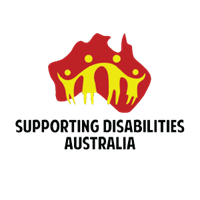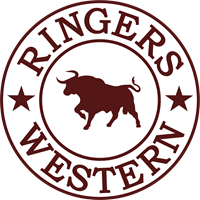

The war years were difficult for Canterbury, as they were for clubs and sports of all nations. While the world was deep in bloody conflict, Australia was fortunate that life could go on, albeit not the same, but without the devestations suffered so badly in Europe.
The problems facing the league were minor by world standards. There was the question of lack of players because of the war effort, and Canterbury, for instance, had to change its colours in 1943 because of the ban placed on striped jerseys. There was a call from a number of Australians for all sport to be abandoned while the war was on. They saw the involvement in sport as a mark of disrespect for the fighting men of the world, unable to enjoy a sporting pastime. The question of sport brought a response from the then Prime Minister, Robert Menzies, who called on all sports to continue, claiming he would go to a football match, if he got the chance.
The NSWRL president Harold Jersey Flegg wrote: “... the NSWRL, in deciding to carry on, is helping to build up this race of athletes, as the Australian and New Zealand troops were designated during the last war by that widely experienced and famous war correspondent, Ashmead Bartlett”.

In 1940, the Country Rugby League disaffiliated itself from the NSWRL; the league conducted their gala day again; Frank Sponberg left Canterbury and played in Wollongong; Eddie Burns, after seven matches, went to Newcastle; and Alan Brady played just three games before retiring. Another to leave was Tom Kirk for Newtown. But Brady was coach of the team, and Canterbury was fortunate to have signed country winger Merv Denton, Jack Bonnyman, who took over as captain, Jim Gibbs and Bob Farrar, a promising second-rower. According to the annual report: “Len (Lin) Johnson and Arthur Morris came of their own desires.”
Brien, coach in 1939, did not stand when he heard that Brady wanted the job, stating: “I consider that Alan's experience and sportsmanship is greater than mine, and results will be assured”.
The Berries maintained their rating, finishing equal third and beating Newtown 19-11 – five tries to one – in the semi-final to qualify for the final. Frank Burge, who had coached Canterbury in their second season, was in charge of Newtown. Canterbury received a setback in the semi-final when Henry Porter was sent off and was unable to play in the final against Easts. It probably mattered not, for Canterbury were no match, losing 14-24, six tries to two. Easts were back on top as the premier club.
Canterbury also made the reserve grade semi-finals, losing their match against St George in a thriller. Ray Lindwall kicked the winning goal.
The three musketeers – Porter, Kirkaldy and Burns – all scored points during the year. Burns scored three tries and Porter and Kirkaldy each kicked two goals. Kirkaldy was the only one of the three to play in the final. Newham continued his outstanding football, scoring 11 tries for the season, a club record.
As 1941 came and went, it was starting to become a case of near enough, but not good enough. Canterbury continued as a major force, finishing equal on top with Easts and Balmain, but not having the 'for and against' record to be minor premiers. Easts had beaten Canterbury twice during the year – 13-2 (the only time Canterbury failed to score a try) and 15-11 (only one try). In the semi-final Canterbury scored four tries against Easts and yet were still beaten 24-22.

Military duties interfered with playing personnel again and there was a reasonably heavy turnover of players in many clubs. Canterbury lost Denton to Young and replaced him with Wests winger Ron Knight. Sponberg and Burns were back and Ron Bailey came to the club after a stint with English club Huddersfield.
Bailey more than compensated for the retirement of Brady. He was a classy centre, his game refined after playing in England. Canterbury appointed Bailey player-coach just as they had done with Brady the previous year. However, unlike Brady, Bailey went on to play more than three matches. In fact, he played all 15, scoring seven tries, and was instrumental in lifting Canterbury not only into the semi-finals of the premiership but also into the semi-finals of the State Cup.
Consistency had become a virtue of Canterbury. Since 1938 when they won the premiership and club championship, they won the State Championship in 1939, as well as the club championship and the reserve grade title. In 1940, they were runners up and semi-finalists in 1941.
In 1942, however, came the first serious doubts that the premiership would be played as this excerpt from the Canterbury Annual Report states: “The outstanding results of the season are quite amazing when it is considered that at the beginning of 1942 grave doubts existed as to whether football would be played, as the international situation had developed into a grave one as far as Australia was concerned...” Not to mention the rest of the world!
Thankfully, the premiership was played. It provided Canterbury with its second first grade title, a significant victory, for they became the first club to win a premiership – without a coach. The club decided that “in view of the conditions being imposed to restrict training, that no coach would be appointed for the first grade side”. However, after the first competition game, Jerry Brien, who had coached the first grade team in 1939, offered his services in an honorary capacity. The club did not give him the status of coach, but gladly accepted him as 'manager'.

Despite the war, Sydney sports fans flocked to Rugby League matches. The game became the perfect diversion from the world's problems and 1942 became a record year. These two paragraphs were included in the Canterbury Annual Report: "Your committee are delighted to report that, owing to the extraordinary support of the general public during the 1942 season, the financial returns to the club created a record, with the result that the players also received a bonus almost double any amount that had previously been paid by the club.
“The 1942 season shattered all previous records for the New South Wales Rugby Football League as far as the premiership competitions are concerned, which is definite proof that the general public relish the relaxation which they receive by attending games of Rugby League Football”.
For Canterbury, training had to be canceled on some nights because of lack of players. Many were engaged in shift work and military duties, and in one reference to the reserve grade team it was noted that during the entire season “very few of the players were able to attend training”.
Winger Edgar Newham, restricted to just six games because of the military duties, scored most tries - eleven. Fullback Lin Johnson kicked 31 goals to topscore with 62 points. Burns, Kirkaldy and Porter each played their 100th first grade matches during the season.
One player arrived like a whirlwind and went the same way...quickly. Tony Nash, a winger, scored four tries in his first grade debut against South Sydney at the Sydney Cricket Ground. In all he scored seven tries in eight games – four tries in five games in reserve grade – and was selected for Sydney against Country.
However, he damaged an ankle early in the match and had to leave the field. One report said of him: “This young player has the football ability, and is sure to be of great value in the future.” But Nash did not play again for Canterbury after that year because of military service.

Worth pointing out is that Canterbury's City Cup (knock-out) match against St George at Belmore Oval drew over 12,000 – a record at a suburban ground.
But these were also important times for patriotism and clubs were able to share in raising funds for the war effort. Over 200 pounds was raised from a match against Newtown at Henson Park. The Red Cross was assisted also by Canterbury thanks to a Patriotic Gala Day, with American representatives, on the 4th of July. The football club's membership was down 58 to 246, principally because of military duties.
Canterbury had appeared certain to win the minor premiership clearly. Although Souths had beaten them 14-12, Canterbury led the premiership by four points with three matches to go. Then came the unexpected – they lost to Eastern Suburbs (20-16), the second loss to them, and to Balmain (14-10) although they had downed Balmain 26-11 in the first round. Balmain were now level and Canterbury had to win their last match. They did so, in excellent style, beating Wests 28-11.
It meant a play-off for the minor premiership, and a 26-20 victory over Balmain – six tries to four. Five of those tries were scored by winger Edgar Newham, which remains a club record. His performance was reported as such:
'NEWHAMS DAY OUT - Five Tries in Minor Final'.
“Gunner Edgar Newham (A.I.F.) played an outstanding part in Canterbury-Bankstown's minor premiership victory against Balmain at the Sydney Cricket Ground on Saturday.
“Newham scored five splendid tries, showing a forcefulness that perhaps has never been excelled. Canterbury-Bankstown won by 26 points to 20.
“It was a game packed with incidents. Balmain was the better team early and led 10-8 at halftime. Play was of a particularly high standard.
“Newham's tries lifted the game to the plane it reached. On one occasion he caught the Balmain fullback, George Endycott, in possession, lifted him bodily and ran downfield with him until pushed over the line with him. The crowd of about 17,000 was just as surprised as the Balmain player.
“There was another occasion when J. Bitas (Balmain) was tackled, lifted, and kept from forcing the ball over the Canterbury-Bankstown line by Jack Bonnyman and Bob Jackson. Referee J. O'Brien wrongly ruled a Balmain try, and as the kick succeeded, it meant five points at a vital time”.

Sadly, the match report did not spend any time in describing Newham's remarkable five tries. As minor premiers, Canterbury had a second chance, and it was just as well. Disaster struck in the semi-finals. St George, who had been beaten by Canterbury (8-7 and 19-5) in the two rounds, thrashed the minor premiers 25-10. The newspaper headlines, always seemingly understating in those times were: 'SURPRISE BY ST GEORGE'.
The report explained: “Greater speed, both in thinking and in execution, enabled St George to outplay the minor premiers...some of the Canterbury-Bankstown attempts at tackling being ludicrous.”
Canterbury went on to the grand final, where they waited for the winner of the final between St George and Eastern Suburbs, where speed was the essence of St George's impressive 18-5 win. By this time the experts, and most of Sydney league followers, were beginning to believe that this would be a St George year. One of the stars in St George's win over Easts and an obvious danger for Canterbury was Ray Lindwall, later to become one of the greatest Test cricket fast bowlers. Lindwall kicked six goals.
Grand final day arrived under grey skies. The ground was muddy and it was obvious that it would favour Canterbury's better and more rugged pack of forwards. But an incident occurred before the first grade grand final was to start which had ramifications in future years for Sydney Cricket Ground patrons. During particularly heavy rain, as the reserve grade grand final was near an end, the spectators on the Hill and on the lawns in front of the outer grandstands jumped the fences and raced across the field to the near empty Member's stands.
The reserve grade grand final had to be stopped as patrons swarmed across the field and took up positions under the shelter. The first grade match had attracted such interest that 26,171 were at the ground, despite the atrocious conditions. According to Eddie Burns, the spectators knocked the fence down, claiming “they came from everywhere”.
The incident was responsible for lifting the ban on patrons who had grieved for some time over the empty spaces in the Members' areas. Often crammed together like sardines on the Hill, spectators had to endure the wet and uncomfortable conditions. The following year, the SCG Trust allowed patrons, on wet days, admittance to the large stand at the Northern end. Entrance was made from the Paddington side of the ground.
While Canterbury became known as the entertainers in the 1980s because of their virile, free-running brand of football, their early successes were based upon a tough, unrelenting pack of forwards. The 1942 side was no exception and no one in the Canterbury camp was terribly upset when the rain came.
The story of the game again received only a single column in the Sydney Morning Herald – there were far more important things troubling the world at the time!

The report began: “Sounder play and the adoption of the correct tactics for the day enabled Canterbury-Bankstown to beat St George by 11 points to 9 in the Rugby League grand final at the Sydney Cricket Ground on Saturday afternoon.
“Taking everything into consideration, including the muddy ground with a treacherous patch in the centre, it was a match worthy of the occasion, and thoroughly enjoyed by a crowd of over 28,000.
“The evenness of the teams kept the crowd in a fever of excitement until the final whistle.
“Canterbury-Bankstown's defence at one period of the game surpassed anything seen in football this season. For fully 10 minutes St George hurled themselves at the line in an endeavour to break through. They were never more than eight yards from the line, but could not break through.
“The ovation for the defenders was deserved.
“It was quickly obvious that Canterbury-Bankstown tactics were to keep the game in its forwards and away from the St George backs.
“Each forward played his part. Roy Kirkaldy was a comparative idler in the rucks sometimes, but he won the vital scrums. Bob Farrar, Frank Sponberg and Henry Porter were tireless, Porter surprisingly by his handling and kicking skill on some occasions.
“Bob Jackson distinguished himself by a magnificent try made possible by a resolute and tricky run, after a movement started by Ron Bailey, who again revealed the form of a first-class player...”
Grand final wins always prompt fond memories. Eddie Burns, again in the front row, remembered fullback Lin Johnson's last attempt at goal just skimming over the bar.
“I can still see him kicking all the turf around the ball. To this day, I don't know how it went over. But it won us the grand final.” said Burns.
St George scorers were the Lindwall brothers, Jack and Ray. Jack scored the try and Ray kicked three goals. The scores were locked at 7-all at half-time.
The two teams were:
CANTERBURY-BANKSTOWN: Lin Johnson, Bob Jackson, Ron Bailey (c), Ron Knight, Edgar Newham, Tom Ezart, Jack Bonnyman, Frank Sponberg, Bob Farrar, George Elley, Henry Porter, Roy Kirkaldy, Eddie Burns.
ST GEORGE: R. Lindwall, O. Campbell, E. McHugh, N. Jones, J. Lindwall, C. Turvey, E. Laurence, W. Collier, L. Kelly, A. Clarke, W. McRitchie, H. Gilbert, C. Montgomery.
SCORERS:
Canterbury-Bankstown 11 (Bob Jackson try, Lin Johnson 4 goals) beat St George 9 (J. Lindwall try, R. Lindwall 3 goals) at the SCG.
The win was another example of clever recruiting by Canterbury. At the start of the year, the club signed two smart players from the Country – Tom Ezart, a clever five-eighth from Port Kembla, and second rower George Elley. Each player went on to play 16 games in their first year.
Bailey, who relinquished the coaching job, retained the captaincy and had another strong year. Canterbury broke many records and were worthy champions. They played 10 of their first 17 matches at the Sydney Cricket Ground, four of those matches against St George, including the semi-final and the grand final.
After the grand final there appeared a brief story that Kirkaldy would retire. They were writing the same story for the next five years. Although Kirkaldy had claimed he was retiring after the 1942 season, he went on to play until the end of 1948!
THE WAR HITS HARD - The was hit hard at Canterbury's ranks in 1943 and the club finished on the bottom of the table with their neighbours, Western Suburbs. Players of the calibre of Henry Porter, Edgar Newham, Bob Farrar, Bob Jackson, Tom Ezart and Tony Nash were lost to the armed forces. All six had played the previous year. It was also a year in which Kirkaldy and Burns suffered serious injuries, playing just nine matches between them. For the first time since 1938 Canterbury spent a whole season without the 'Three Musketeers', Burns, Kirkaldy and Porter, together. If nothing else Canterbury's season created a record for injury insurance claims!
Training was again disrupted, although Sydney had the luxury of lights at night, even if it was temporary, and at least for this season the players – those that could train – could see where they were running.
Kirkaldy was coach and it meant that Canterbury had not retained a first grade coach – a novelty by today's standards. Special mention was made of players such as Sponberg, Bailey, and fullback Lin Johnson, the “smiling last line of defence” who “retained his uncanny skill in handling the ball, and the well-known cry of the spectators, 'in the bag', could be heard every game.” Because of the defeats, club support wasn't as great and therefore the bonuses were considerably smaller than in the previous year. However, the NSWRL created an all-time record in gate receipts and attendances, with 61,000 watching the grand final between North Sydney and Newtown.
For the second consecutive year, Canterbury's Annual Ball was canceled, the explanation being: “It being deemed wiser to wait until such times as the position in the war situation had improved to permit the function to be carried out in a spirit that the occasion warrants.”
The club won just three matches – 16-8 against Easts, 16-8 against Wests and 13-10 again against Easts.
One other significant event occurred that year – Canterbury wore new colours. This item under 'CHANGE OF COLOURS' appeared in the Canterbury report:
“Owing to the ban placed on the manufacturer of striped jerseys, your club will appear in new colours in the 1943 season, the committee having selected a maroon jersey and, if possible, to secure white knickers will be worn (sic) – a uniform which would appeal.” According to Eddie Burns, the jersey was maroon with a blue V.

The feeling of depression and pessimism brought about by the war lingered even in Rugby League committees. Canterbury's secretary Barney Russell wrote: “Your committee feels a certain amount of disappointment that the World War was not yet finished, but the position has taken a drastic turn in favour of the allied nations since our last meeting... We sincerely trust that it will soon finish, and allow the world in general to carry on in a normal condition”.
Not even the football could lift Canterbury's spirit for they finished on the bottom of the table again, winning three matches and drawing one. There was mention of a promising youngster called Jim Collins, later to be a club president, but injuries again crippled the team – Sponberg playing only three matches, Kirkaldy nine, and Porter five. It is worth nothing that Eddie Burns, who played 13 matches that year was also the club's delegate to the junior league!
In 1945 the turning point for the whole world came – the end of the war. It was a time for rejoicing and the NSWRL geared itself for an influx of players, returning from active service. Canterbury's position on the table in 1945 was sixth, an improvement of two places, and bonuses improved again.
The reserve grade side had come within an ace of winning the premiership. They had beaten Norths in a play-off for the minor premiership but lost twice to Souths, once in the semi-finals (24-20) and in the grand final (11-7) to lose the title. Yet it augured well for the future. The interstate series against Queensland re-started and Henry Porter had the distinction of playing for Queensland, one of the few players to have represented both States. Ron Bailey was again a master, earning rave reviews from Queenslanders after his polished display for NSW.
The season's end brought joy and confidence, even from clubs who finished at the bottom. The war was over and Canterbury, like the other clubs, looked ahead with new confidence and hope.








